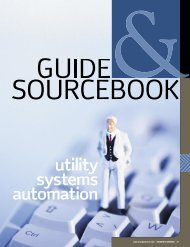FERC vs NERC: A grid control showdown over cyber security
FERC vs NERC: A grid control showdown over cyber security
FERC vs NERC: A grid control showdown over cyber security
Create successful ePaper yourself
Turn your PDF publications into a flip-book with our unique Google optimized e-Paper software.
WWW.INTELLIGENTUTILITY.COM /// JULY/AUGUST 2011<br />
28<br />
a way that was most effective for them versus how I think<br />
management and the project team might have viewed how<br />
they would use these tools.<br />
And then finally, with deploying a mobile solution<br />
to 3,000 users who are all mobile, constantly changing,<br />
moving around, a lot of tools and technologies need to be<br />
put in place around software management and software<br />
distribution to keep the platform current, secure, and up to<br />
date at all times.<br />
You’ve got to test<br />
each one of your<br />
field activity types<br />
and let it write back<br />
to the system to<br />
see how it’s going<br />
to come across.<br />
JACKIE SCHEEL<br />
SCHEEL I’m from the business side, but sometimes in the<br />
IT world, people say, “How important is testing?” Well, you<br />
can never contradict or even contemplate what the system’s<br />
going to do, so you have to test each one of your scenarios.<br />
You’ve got to test each one of your field activity types and<br />
let it write back to the system to see how it’s going to come<br />
across. A lot of testing is what people seem to want to cut out<br />
of their timelines, and I highly recommend you do not cut<br />
your scenario testing out.<br />
Also, a major factor to having a successful mobile workforce<br />
unit is to get your front line employees engaged and<br />
ask them exactly what it is that they want to see or they don’t<br />
want to see. They’re the ones who are going to be using the<br />
system the most. When we added the meter service agency<br />
on [Ed. Note: JEA has been building its mobile workforce<br />
management platform in stages since 1988], we more than<br />
tripled the number of users. We added 200 users, and I will<br />
tell you one of our lessons learned here was, during the testing,<br />
during the project, we did as much load testing as we<br />
could, but what we did not realize was that most of these<br />
UTILITY MOBILITY<br />
users would all be signing on at the same time. So what we<br />
did realize was that, at about 7 a.m., we had about 400 users<br />
hitting the machine. So we had to go back to our IT department<br />
and add a couple of different servers.<br />
We called it “morning sickness.” I would advise anyone<br />
that, when they do their testing and they do their load testing,<br />
they consider when and how many users will be on the<br />
system at the same time.<br />
SCHACH We spent a lot of time upfront establishing the<br />
right data into the tool, and that’s proven to be just a huge<br />
part of the success for Vectren. We do a lot of work managing<br />
by performance metrics dashboards and what not. If the<br />
data’s not in there correctly in the first place, it’s tough to<br />
get buy-in from your field management. If they just don’t<br />
believe the original data, (then they won’t) believe the data<br />
the system’s now spitting out. We spent so much time early<br />
on that we’ve gotten buy-in, and now we can just move on to<br />
managing the actual work.<br />
Panelists also discussed changing business processes with<br />
the new mobile platform.<br />
BROWNING Another key piece of the project was really<br />
looking at taking our current manual business processes<br />
and looking at how they would be implemented with the<br />
new technology. We certainly didn’t want to take a current<br />
manual process, put technology around it, and still do it the<br />
same way. There was an opportunity to leverage technology<br />
and redesign the process and we tried to do that wherever we<br />
could. A big piece of this was focusing on handoffs between<br />
work groups and ensuring the right data got out to the field<br />
at the right time for each of our users.<br />
SCHACH Meter order management was my largest activity,<br />
and as such, we spent a lot of time trying to figure out<br />
how we could better manage that area. One problem we had<br />
was that our labor contract had originally, some years back,<br />
forced us to treat our various operating centers across our<br />
service territory as individual operating centers—everybody<br />
sort of did their own thing, if you will.<br />
The workers were tied to those areas or depots and they<br />
couldn’t cross boundaries, and it just didn’t make sense. You<br />
could have an emergency where somebody might live literally<br />
across the street and they were not allowed to work that<br />
emergency because of the labor issue.<br />
So once we were able to break that model through contract<br />
discussions, it opened the gamut of flexibility for us to<br />
then focus on this category of work.<br />
And finally, more keys to success, and <strong>over</strong>all benefits:<br />
SCHACH Since 2004, this cost category saved about $3 million.<br />
So, we’re operating at $3 million less than we would<br />
have then, and obviously that’s a number that’s going to continue<br />
on in the future and hopefully even get better. We’ve


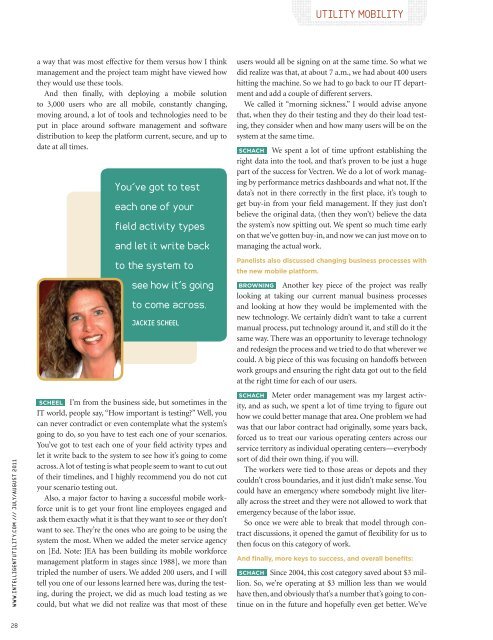
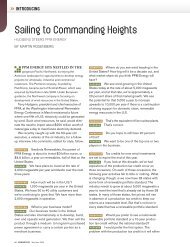

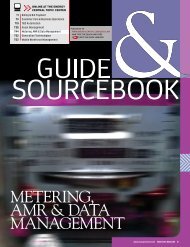

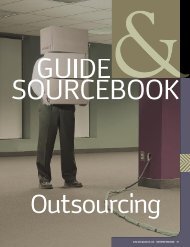
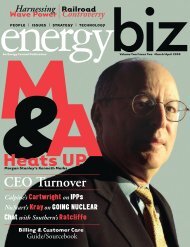

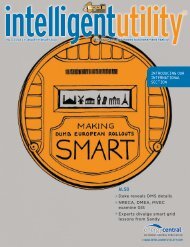
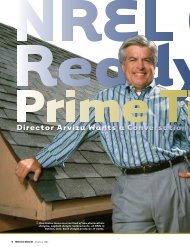



![View From the Trenches [PDF]](https://img.yumpu.com/18854438/1/190x252/view-from-the-trenches-pdf.jpg?quality=85)
